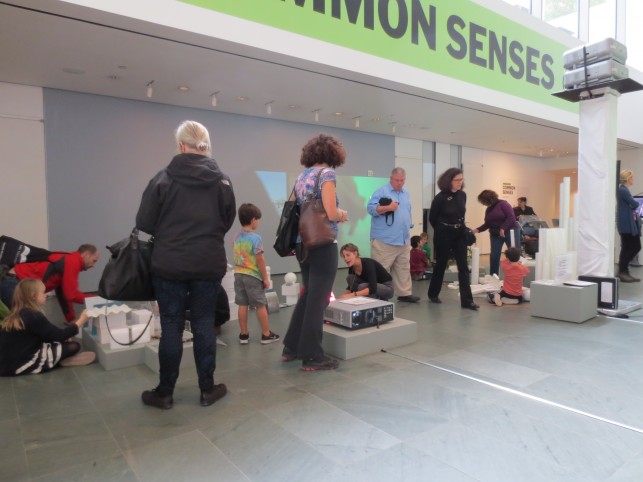Thanksgiving is reportedly the biggest travel week of the year, and from what I experienced this year, I would have to agree. The night before Thanksgiving Penn Station was shut down due to switch problems, forcing many to travel on Thanksgiving Day. I managed to get a seat as they quickly filled up around me.

Posts tagged ‘Hurricane Sandy’
Dealing with Wet Contemporary Paintings: Tips for Artists—Introduction
The following tips are suggestions from conservators, but please realize that every painting and circumstance is different, and that these are general guidelines. A conservator may choose very different treatment options from those presented below upon seeing the painting’s condition.
Dealing with Wet Contemporary Paintings: Tips for Artists—Water Damage to Paintings
Watch for water that has collected between the stretcher and the reverse of the painting. If a lot of water has accumulated, tip the painting so that the water can run out and away from the painting (i.e., tip the painting bottom face upwards and the top reverse downwards, so the water runs off the stretcher and not into the canvas).
Dealing with Wet Contemporary Paintings: Tips for Artists—Wet Paintings: Structural Issues
Never remove a wet painting from its stretcher bars. The stretcher bars are keeping the canvas from shrinking. The painting is apt to generate enormous tension in the wet canvas—somewhat less so with salt or brackish water—as the fibers swell with the water.
Dealing with Wet Contemporary Paintings: Tips for Artists—Frames
Dealing with paintings in their frames poses a difficult set of tradeoffs. First remove all backing materials—paper, cardboard, Foam Core Board, or plastics.
Remove paper or cardboard backings from the reverse of the painting.
Dealing with Wet Contemporary Paintings: Tips for Artists—Mold and Paintings
Never wrap a wet painting in plastic, as this will promote mold growth. Also, the surface may be quite fragile and nothing should come in contact with the surface until it has been thoroughly dried and inspected.
Paintings wrapped in plastic should be removed from the plastic to prevent mold growth if they were in a damp environment
Dealing with Wet Contemporary Paintings: Tips for Artists—Health and Safety
First and foremost, be safe. In wet environments, if the power has been restored, be particularly careful with electricity and electrical appliances. Using a plug-in GFCI (Ground Fault Circuit Interrupter) on any electrical appliance you are using is strongly recommended.
MoMA Studio: Common Senses Welcomes Families After Hurricane Sandy
When I received notice that MoMA would be reopening to the public and its employees on Wednesday, October 31, after being closed for two days due to Hurricane Sandy, I have to admit that I wondered if it was too soon.
If you are interested in reproducing images from The Museum of Modern Art web site, please visit the Image Permissions page (www.moma.org/permissions). For additional information about using content from MoMA.org, please visit About this Site (www.moma.org/site).
© Copyright 2016 The Museum of Modern Art



